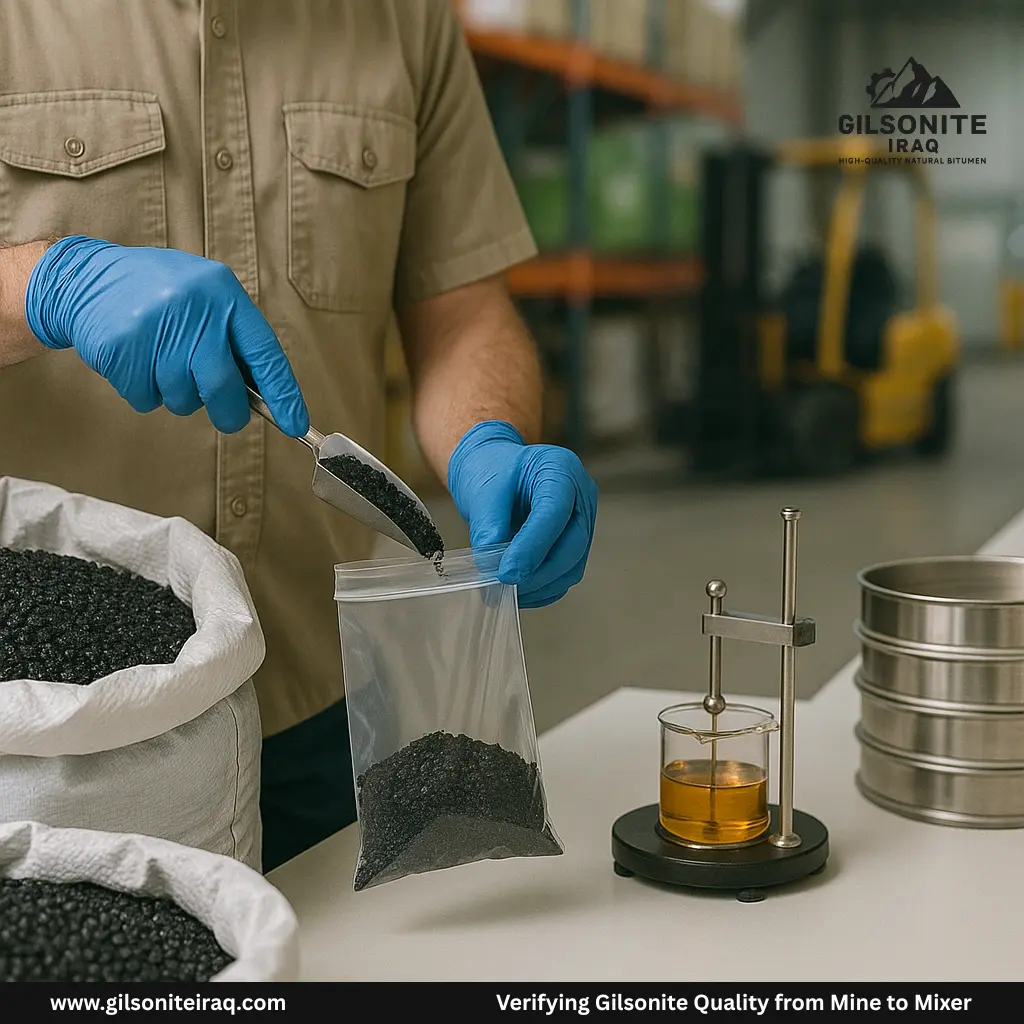Why Quality Control Matters
Whether you’re building roads, sealing structures, or formulating inks, consistent gilsonite is the difference between a smooth project and costly rework. This guide shows how to verify quality at every step—from the mine face to your mixer or mill.
1) Define the Spec Upfront
Create a purchase specification that includes:
- Softening point (Ring & Ball): correlates with stiffness and application temperature.
- Ash content (%): lower ash generally means cleaner carbon and fewer impurities.
- Moisture & volatiles: important for heating behavior and safety.
- Solubility profile: e.g., CS₂/toluene solubility to infer molecular weight distribution.
- Particle size distribution (PSD): ensures handling and dispersion; define D10/D50/D90.
- Color/appearance & specific gravity: for quick incoming checks.
- Contaminants: screen for stones, metal fragments, or oversize lumps.
2) Sampling: Make It Representative
- Lot definition: one lot = one continuous production run (or shipment unit).
- Incremental sampling: collect from multiple points in bags, big bags, or bulk (top/middle/bottom).
- Composite sample: blend increments to create the test sample; retain retain samples for disputes.
- Chain of custody: label with lot/shift/date and seal bags after sampling.
3) Laboratory Verification
- Softening point: verify it falls within your spec window (e.g., ± 5 °C).
- Ash (%): run at set temperature to constant weight; elevated ash can reduce binder performance.
- Moisture: oven-dry method or rapid moisture analyzers.
- Solubility: confirm target solubility bands for your application (inks vs binders differ).
- PSD: laser diffraction or sieve stack—match to process (e.g., < 200 mesh for inks).
- Optional analyses: elemental metals (ICP-OES), TGA for thermal profile, FTIR/Raman for fingerprinting.
Tip: Agree on referee methods with the seller to resolve discrepancies quickly.
4) Storage, Handling, and Anti-Caking
- Dry, covered storage to prevent moisture pick-up.
- Stacking limits for bags to avoid compaction/caking.
- FIFO rotation and clear lot segregation.
- Bulk handling: ensure conveying systems minimize fines loss and contamination.
5) Processing Readiness at the Mixer/Mill
- Pre-heating protocols matched to softening point; avoid thermal shock.
- Addition sequence: gilsonite first or with polymer—document what gives best dispersion.
- Mixing energy & residence time: record so production batches replicate lab results.
- In-process checks: viscosity, penetration/stiffness (where applicable), and draw-downs for visual uniformity.
6) Documentation: COA, MSDS, and Traceability
- COA per lot covering: softening point, ash, moisture, solubility, PSD.
- MSDS for safe handling.
- Traceability map: mine → processing plant → packaging → warehouse → shipment → site.
7) Logistics from Iraq: Risk-Control Points
- Weatherproof packaging (PE-lined bags/jumbos) and tamper-evident seals.
- Moisture monitors in long transits.
- Transit sampling at port of entry for high-value projects.
- Clear Incoterms and damage/shortage procedures.
FAQs
How tight should the softening-point spec be?
Commonly ± 3–5 °C, tighter for critical ink or resin work.
What’s a good ash target?
Lower is better for performance-critical applications; align the threshold with your process sensitivity.


